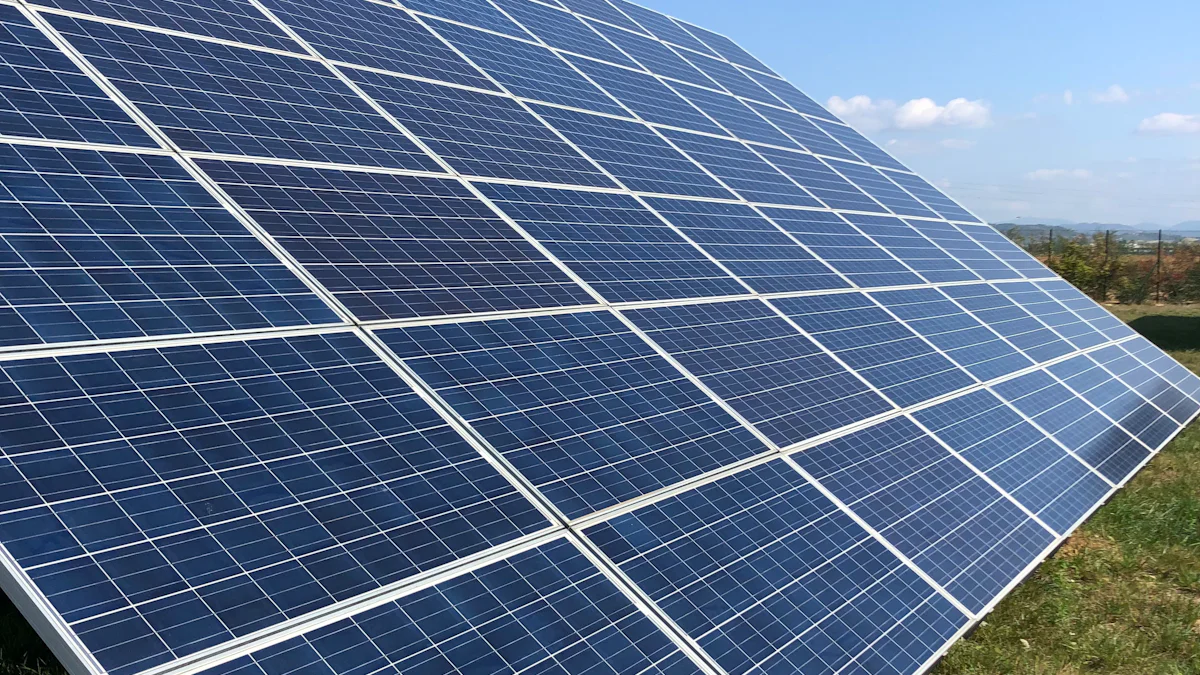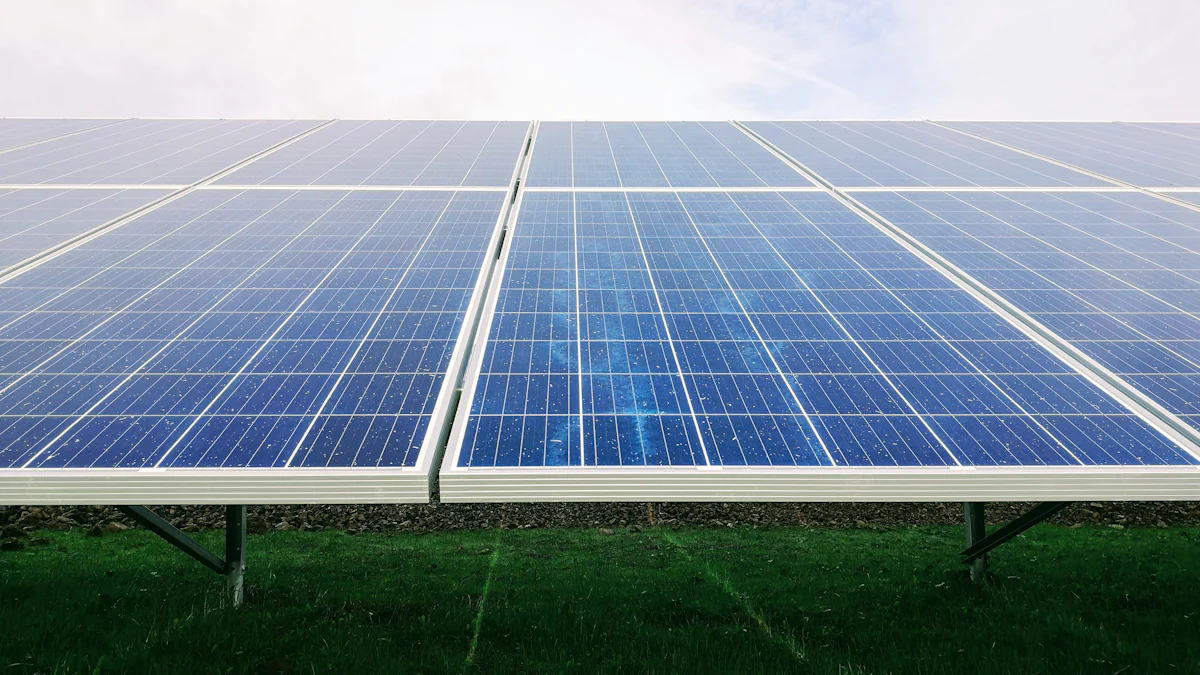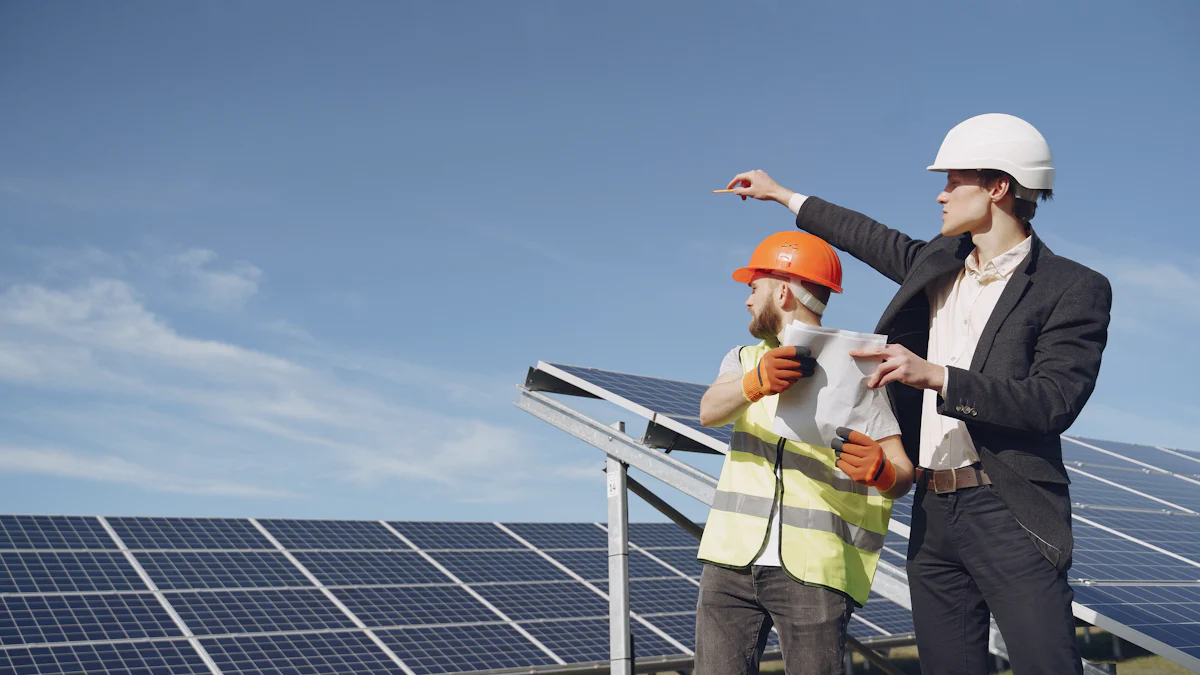How to Optimize Solar and Storage Systems Effectively

Optimizing solar and storage systems is crucial for maximizing efficiency and reducing costs. You can harness more usable electricity from each solar panel by implementing effective strategies. This means lower installation expenses and fewer panels to maintain over time. However, the industry faces challenges like integrating advanced technologies and managing energy distribution during peak demand periods. By focusing on optimization, you can enjoy significant benefits, such as enhanced energy independence and cost savings. Solar Energy Management Systems play a vital role in achieving these goals, ensuring you get the most out of your solar investment.
Understanding Solar and Storage Systems

To get the most out of your solar and storage systems, you need to understand their components. Let's break it down.
Components of Solar Systems
Solar systems consist of several key parts that work together to capture and convert sunlight into usable electricity.
Solar Panels
Solar panels are the heart of your solar system. They capture sunlight and convert it into direct current (DC) electricity. The more efficient your panels, the more energy you can generate. When choosing panels, consider factors like efficiency, durability, and warranty.
Inverters
Inverters play a crucial role by converting the DC electricity from your solar panels into alternating current (AC) electricity, which powers your home. You have options like string inverters, microinverters, and power optimizers. Each type has its pros and cons, so choose based on your specific needs.
Mounting Systems
Mounting systems secure your solar panels to your roof or ground. They ensure panels are positioned for maximum sun exposure. Proper installation is vital for safety and efficiency. You can choose between fixed mounts or tracking systems that follow the sun's path.
Components of Storage Systems
Storage systems store excess energy generated by your solar panels. This stored energy can be used when sunlight is unavailable, providing backup power and enhancing energy independence.
Batteries
Batteries are the core of your storage system. They store the energy your solar panels generate. When selecting batteries, consider capacity, lifespan, and cost. Solar Battery Systems provide backup power during grid outages and help manage energy availability.
Charge Controllers
Charge controllers regulate the flow of electricity from your solar panels to your batteries. They prevent overcharging and extend battery life. Advanced Battery Management Systems offer better control and optimization, maximizing stored energy use based on demand and grid conditions.
Monitoring Systems
Monitoring systems track your solar and storage system's performance. They provide real-time data on energy production and consumption. With a Solar Energy System with Batteries, you can use tools like the SMA sunny home manager for effective system monitoring and energy management.
Understanding these components helps you make informed decisions about your solar and storage systems. By optimizing each part, you can enhance efficiency, save costs, and achieve greater energy independence.
Strategies for Optimization
Optimizing your solar and storage systems involves strategic planning and execution. Let's dive into some effective strategies that can help you get the most out of your investment.
System Design and Configuration
Designing and configuring your system correctly is the first step toward optimization. Here's how you can do it:
Site Assessment
Start by assessing your site. Look at factors like sunlight exposure, shading, and roof orientation. A thorough site assessment ensures that your solar panels receive maximum sunlight, which is crucial for generating more electricity. Remember, the more sunlight your panels capture, the more energy you produce.
System Sizing
Next, focus on system sizing. Determine the right size for your solar and storage systems based on your energy needs. Oversized systems can lead to unnecessary costs, while undersized ones may not meet your energy demands. Proper sizing ensures efficiency and cost-effectiveness.
Component Selection
Choose the right components for your system. Consider the efficiency, durability, and compatibility of each component. High-quality components may have a higher upfront cost, but they offer better performance and longevity. This selection process is vital for maximizing your system's output over its lifespan.
Performance Monitoring and Maintenance
Once your system is up and running, ongoing monitoring and maintenance are key to keeping it optimized.
Regular Inspections
Conduct regular inspections of your solar and storage systems. Check for any signs of wear and tear, and ensure all components are functioning properly. Regular inspections help you catch potential issues early, preventing costly repairs down the line.
Data Analysis
Use data analysis to monitor your system's performance. Track energy production and consumption patterns. This information helps you identify trends and make informed decisions about system adjustments. By analyzing data, you can optimize energy usage and improve efficiency.
Predictive Maintenance
Implement predictive maintenance strategies. Use advanced tools to predict when maintenance is needed before issues arise. This proactive approach minimizes downtime and extends the lifespan of your system. Predictive maintenance ensures your system operates at peak performance, yielding better returns on your investment.
By following these strategies, you can effectively optimize your solar and storage systems. Not only will you maximize energy production, but you'll also enjoy significant cost savings and enhanced energy independence.
Implementing Practical Solutions

Optimizing your solar and storage systems doesn't stop at the initial setup. You can enhance performance by implementing practical solutions that keep your systems up-to-date and efficient. Let's explore how you can upgrade existing systems and integrate advanced technologies.
Upgrading Existing Systems
Upgrading your solar and storage systems can significantly boost their efficiency and lifespan. Here are some ways to do it:
Retrofitting Components
Retrofitting involves updating or replacing parts of your existing system with newer, more efficient components. You might consider swapping out older solar panels for ones with higher efficiency ratings. This change can increase energy production without needing additional space. Similarly, upgrading inverters or mounting systems can improve overall system performance. By retrofitting, you ensure your system remains competitive with the latest technology.
Software Updates
Software plays a crucial role in managing solar and storage systems. Regular software updates can enhance system performance and introduce new features. These updates often include improvements in energy management algorithms, which help optimize energy use and storage. Keeping your system's software up-to-date ensures you benefit from the latest advancements in Solar Energy Management Systems.
Integrating Advanced Technologies
Incorporating advanced technologies into your solar and storage systems can take optimization to the next level. Here's how you can do it:
Smart Inverters
Smart inverters are a game-changer for solar systems. They not only convert DC electricity to AC but also offer advanced grid support functions. Smart inverters can communicate with the grid, adjust power output, and even help stabilize the grid during fluctuations. By integrating smart inverters, you enhance your system's efficiency and reliability.
Solar Energy Management Systems
Solar Energy Management Systems (SEMS) provide comprehensive control over your solar and storage systems. They monitor energy production, consumption, and storage in real-time. With SEMS, you can make informed decisions about energy use, ensuring maximum efficiency and cost savings. These systems often include user-friendly interfaces, making it easy for you to track and manage your energy resources effectively.
By upgrading existing systems and integrating advanced technologies, you can significantly optimize your solar and storage systems. These practical solutions not only improve performance but also extend the lifespan of your investment. Embrace these strategies to enjoy greater energy independence and cost savings.
Optimizing your solar and storage systems involves several key strategies. You should focus on system design, performance monitoring, and integrating advanced technologies. These steps ensure you maximize energy production and achieve cost savings.
"Understanding the advantages and disadvantages of the systems under consideration is critical for maximizing benefits while reducing costs."
Adopting these best practices will not only enhance your energy independence but also offer better returns on investment. As technology advances, the future of solar and storage systems looks promising. Stay informed and proactive to make the most of your solar investment.